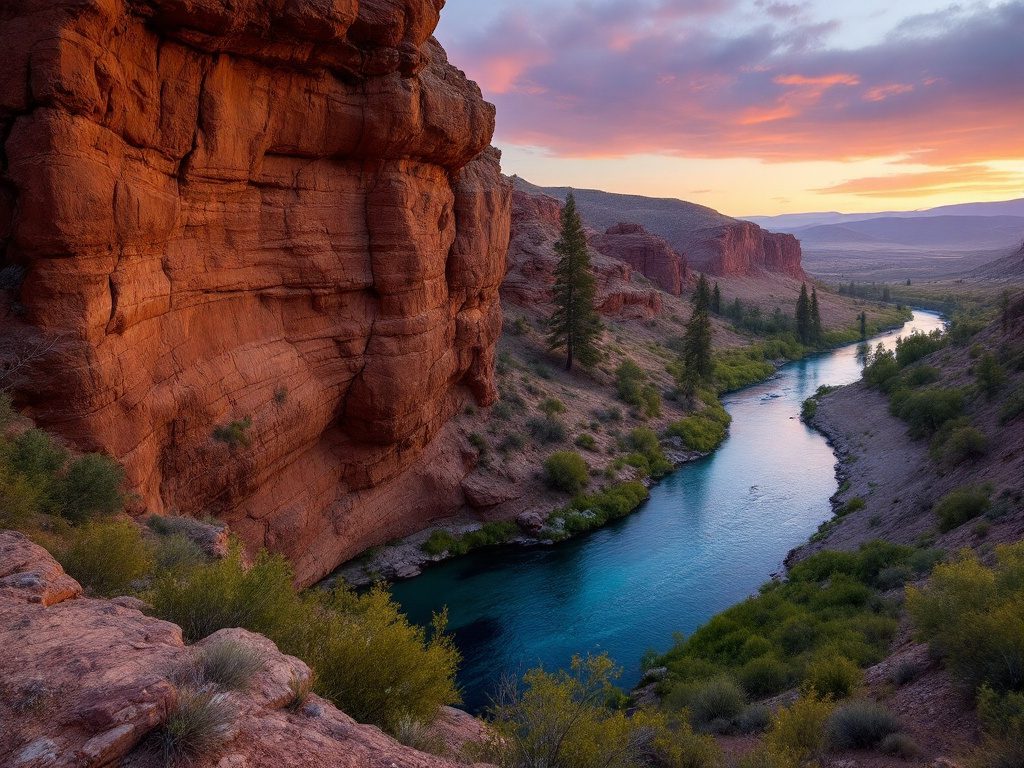Rethinking Spring’s Lifeline: The Hidden Journey of Runoff
Cracking open our understanding of the Western United States’ spring runoff, scientists have revealed a discovery that upends decades of water management wisdom. Imagine the clear, cold streams flowing from the Rocky Mountains every spring as the fresh bounty of recent snows. For generations, both water managers and urban planners based crucial decisions on this image—one where snowpack melts, slides through shallow earth, and surges out again within a single season. Reality, it turns out, is far more complex—and more ancient than anyone suspected.
University of Utah hydrologists, in work published in the journal Nature Communications Earth & Environment, have shown that the majority of spring runoff isn’t immediate snowmelt at all. Instead, most of it has been trapped underground, sometimes for decades, before making its way to creeks and rivers. Their findings: the water coursing through Western streams each spring is, on average, over five years old. In some places, it can be as ancient as fifteen, hiding just beneath our feet, slowly threading through rock and aquifer, biding its time.
This revelation came thanks to groundbreaking work using tritium isotope analysis—a method not unlike carbon dating, but for water. Tritium, a rare hydrogen isotope released into the atmosphere by mid-20th-century nuclear testing, creates a precise timestamp in precipitation. By sampling water from 42 runoff sites across the West, scientists traced water’s underground journey, painting a picture that is both more hopeful and more sobering in the context of climate change.
The Water We Never Knew We Had—and Could Lose
Why does the age of spring runoff matter? For starters, it turns on its head the way states, cities, and farmers have calculated water availability—especially important in a region wracked by drought and population growth. Previous models, which assumed most snowmelt swept rapidly into rivers, wildly underestimated the underground reservoirs that serve as life support during dry years. In the words of Sara Warix, lead study author and Utah geology professor, “We now realize there is an order of magnitude more water stored underground in these mountain ranges than was accounted for by water managers.” That means decisions about irrigation, city growth, and even wildfire prevention have been built on a myopic view of the West’s true water reserves.
A closer look reveals what’s been at stake. Communities like Salt Lake City and sprawling farming operations along the Colorado River have made plans for the future based on instantaneous runoff. Conservative policymakers, clinging to outdated data and resisting the integration of climate science, often touted these traditional models as justification for maintaining unsustainable water use patterns—and for opposing regulatory changes that could protect long-term supplies.
“The West’s entire approach to water management has been based on the myth of instant snowmelt. This discovery challenges us to think generationally about water—not just year by year.”
The science now demands a new, more holistic approach—one that considers not just the volume of water in a single season, but how human activity, development, and climate change alter underground water flows for generations to come. If we ignore these nuances, warns Harvard hydrologist Karen Wilson, “we risk catastrophic shortages, ecosystem collapse, and instability across the entire region.”
Models, Myths, and the Urgency of Climate-Smart Management
Beyond data, there are real-world consequences when policy drags behind science. Take the ongoing fights over the Colorado River Compact, where states battle over “their share” of flows they long believed to be reliable and immediate. The new findings suggest that some of this water is borrowed from the past—the slow yield of aquifers that may not refill nearly as fast as once assumed, especially with warming summers and shrinking snowpacks.
Researchers like Professor Kip Solomon, who co-authored the Utah study, emphasize the urgent need for updated hydrologic models that accurately include groundwater storage and delayed flows. Water managers must reconcile with the reality that what happens in winter isn’t seen in rivers for years, sometimes decades. This changes everything from how we plan reservoirs and forest management, to which crops can sustainably grow where. “Managing water as if there is always a fresh supply is a recipe for disaster,” Solomon cautions. Progressive policy should prioritize conservation, restore wetlands, and encourage integrated management that spans surface and groundwater, rather than perpetuating the siloed, extractive logic of the past.
The lessons from this study extend far beyond Western mountains. History repeatedly demonstrates that societies endure or fall based on how wisely they steward their natural resources. The collapse of the ancient Hohokam civilization in Arizona, for instance, has been traced in part to mismanagement of water and the failure to adapt as aquifers dried out. A just, sustainable West demands better. Accepting the slow cycles of renewal in our hydrology calls for humility and courage in public policy. Are we ready to rethink not just when, but how we use the precious water hidden beneath our feet?

